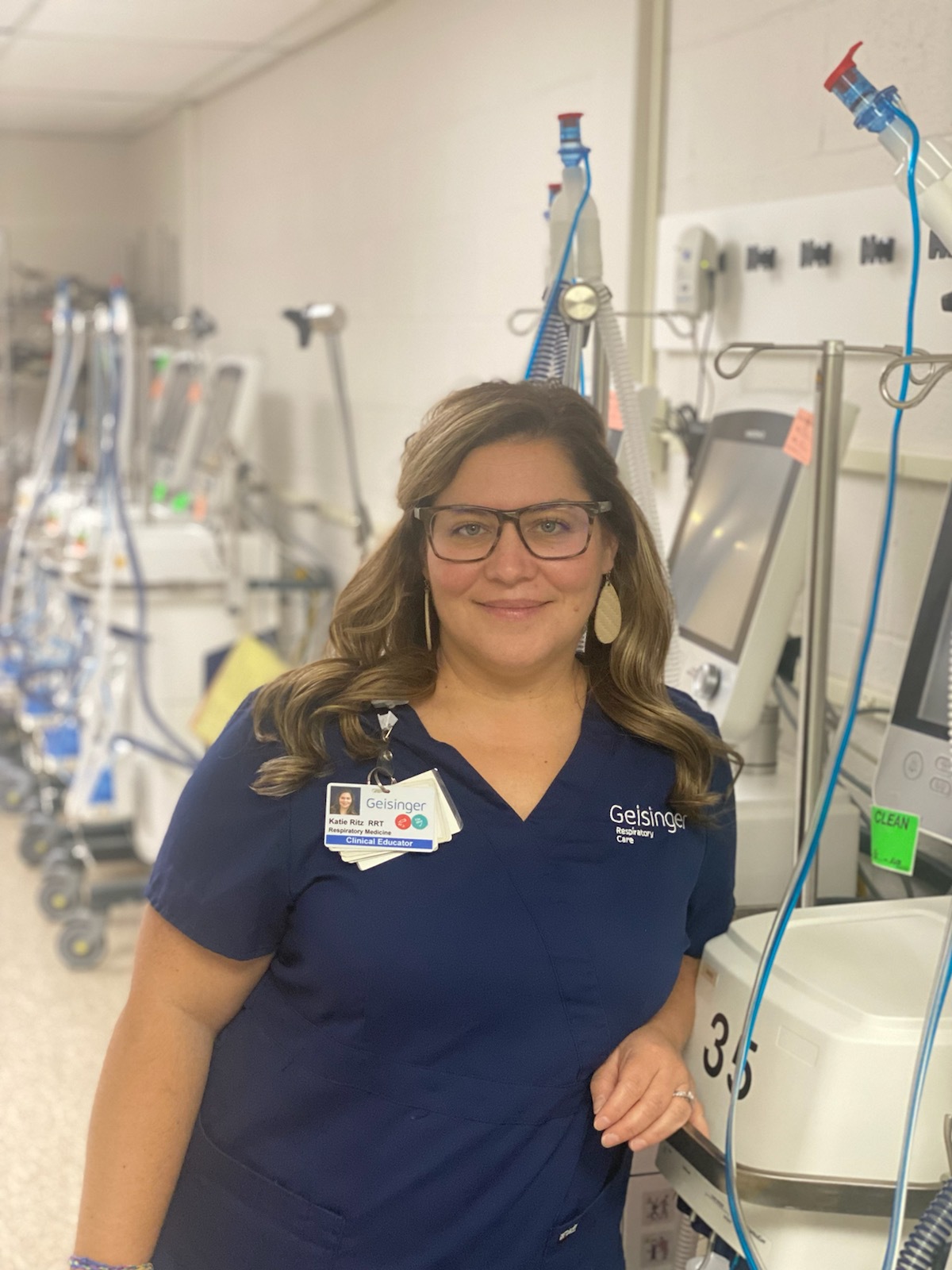
When Katie Ritz, BS, RRT, RRT-NPS, was seeking a career, she was looking for something that checked all her boxes. Respiratory care covered them all.
 Katie Ritz enjoys her role as a clinical educator at Geisinger Medical Center.
Katie Ritz enjoys her role as a clinical educator at Geisinger Medical Center.“I wanted to work in health care . . check. I wanted a health care career in which I would be a true specialist in a specific discipline . . . check. I wanted a career that would provide career options in terms of work setting and clinical ladder opportunities . . . check. And, as an 18-year-old pre-college student with big dreams and aspirations, I sought a profession that would offer job opportunities regardless of where I landed, geographically, in life . . . check,” she said.
She joined the staff at Geisinger Medical Center in Danville, PA, in 2008 and for the first ten years focused on pediatric and neonatal intensive care, becoming a Tier II therapist about year eight. “A Tier II therapist is one who assists with core education and process improvement projects,” she explained.
She was loving the role, but then an opportunity arose to apply for the position of clinical educator for the department as a whole. She was apprehensive but intrigued.
“After ten years specializing in pediatrics, I had reservations about leaving the bedside to take on an education role,” admits Ritz. ”As I thought about the transition, though, I realized that this position would give me an opportunity to use my talents to mentor future therapists into strong clinical staff.”
Responsibilities are vast and varied
Ritz had all the qualifications required to get the job — an advanced credential, a bachelor’s degree or higher, at least five years of clinical experience, and AARC membership — so she went for it and landed the position.
Her job responsibilities are vast and varied. In addition to planning for new employee onboarding and orientation, she regularly mentors staff and oversees new staff during the orientation process. She also selects preceptors and handles their training, identifies staff educational needs, and develops action plans.
Ritz organizes the annual in-house respiratory conference, carries out the annual department policy review, facilitates student clinical rotations, and attends advisory board meetings with clinical affiliate schools. She facilitates and implements co-op and externship positions and rotations as well, and works on career education and the recruitment of high school and college students to the profession.
The job also requires her to assist with departmental process improvement projects, giving her the chance to have a real impact on how care is delivered by RTs in her facility. But ensuring staff have the education they need to rise to the top is why she does what she does.
“The biggest reward in this role — much like any other role — is seeing the fruits of your labor,” said Ritz. ”For this role, that comes in the form of onboarding and orienting through mentorship, and eventually seeing new staff succeed and become independent and skilled bedside clinicians.”
Learn before you teach
Taking on a clinical educator position in a respiratory care department isn’t something every therapist will aspire to, but if it sounds good to you, Katie Ritz says the best way to make yourself stand out from the crowd is to take every opportunity that comes your way to learn about new and different areas of the profession.
“Department looking for staff to join the ECMO team? Try it! Manager needs someone to become an ACLS/PALS instructor? Why not? Hospital looking for an RT to join the patient satisfaction committee? Go for it!” said Ritz. “All of these extra responsibilities prepared me by introducing me to a network of professionals that helped shape me into the therapist and educator that I am today.”





